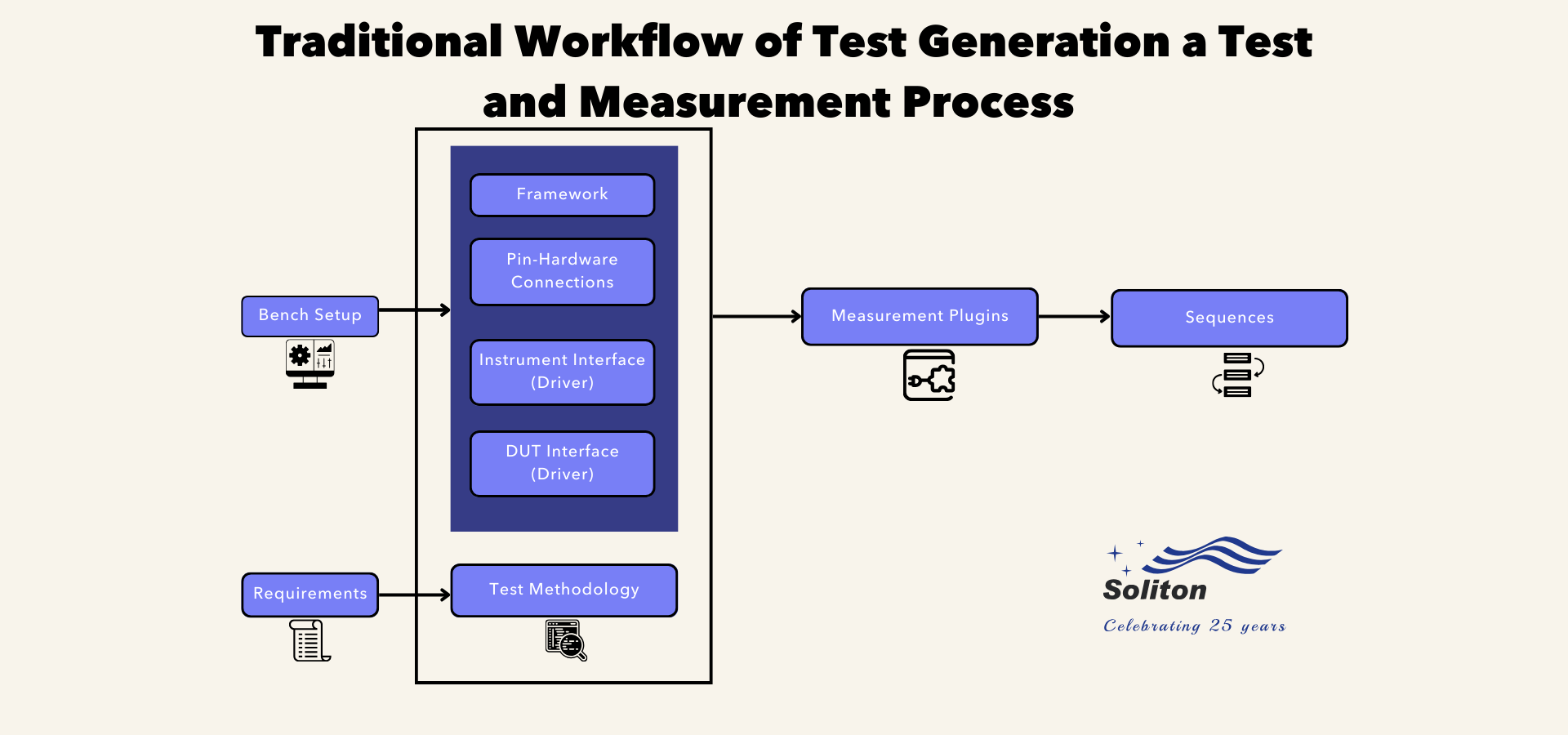In the semiconductor industry, the significance of test and measurement cannot be overstated. It plays a critical role in ensuring the intricate functionality, reliability, and performance of devices, making the role of a test engineer both pivotal and challenging.
While automation frameworks have streamlined and simplified test generation in test and measurement, the traditional process still carries numerous complexities and intricacies.
In this blog, let us delve deep into the test and measurement process as we learn more about the conventional approach, the role of automation, and the emergence of AI to assist in test and measurement.
Traditional Test Generation for Test and Measurement
Test generation in a test and measurement process starts with the validation engineer receiving a list of requirements from the design architect or design engineer to perform a list of tests under certain conditions. The primary objective is to assess the device’s performance under these specific circumstances with the help of a test bench with suitable instrumentation.
It involves a series of steps, starting with:
Devising a Test Methodology
To validate the specified requirements, the first step would be to devise a test methodology. Test methodology refers to the systematic approach and procedures used to design, develop, and conduct tests by employing certain principles, techniques, and best practices to arrive at reliable results.
For example, consider a post-silicon engineer who is requested to verify the line regulation of a Low-Dropout Voltage Regulator (LDO). The engineer should consider the different input voltages to apply on the LDO under a specified load current and check if the LDO can maintain a constant output voltage. They would incrementally increase the input voltage and measure the output voltage stability. Additionally, they must also account for the time taken to stabilize the output voltage each time the input voltage is changed.
This is a manually intensive process, requiring the engineer to possess a profound comprehension of the technical intricacies necessary to devise the test methodology.
Assembling the Software Setup for Automated Testing
With the theoretical phase of devising the test methodology done, the engineer must set up the automation bench for measurement. They would be provided with an automation software framework support for developing the required measurements.
The automation framework typically streamlines various tasks, such as initializing projects, configuring instruments, sequencing, and adjusting configurable parameters. However, the development of the core measurement (described above) in software form remains the responsibility of an engineer.
A typical automation framework offers the following capabilities to facilitate measurement development:
- Development environment to develop the measurement code modules in an abstract manner, with easy quick integration into the framework upon completion.
- APIs to manage the Instrument handles/session from the software framework. These handles are required in the measurement code module to control the instruments to apply stimuli and make measurements.
- Instrument drivers to control the functionality of the different instruments used to set up the required test environment.
- Device driver support to control the different functionality of the Device Under Test (DUT).
 Workflow of Test Generation Process
Workflow of Test Generation Process
Challenges with Automation Frameworks
While automation frameworks offer valuable tools to enhance engineers’ efficiency and productivity when developing tests, it is still essential for engineers to acquire a diverse set of expertise, skills, and support to excel in this area. These include:
- A broad skill set encompassing methodology, programming, device knowledge, and setup procedures, often proving laborious and time-consuming for engineers.
- Knowledge of framework components and driver details for both instrument control and DUT control.
- It also requires support and guidance to develop a reusable measurement code that complies with all standards defined by a software framework.
Considering the above, test development becomes a bottleneck when performing automation, thus reducing the test coverage.
Potential Role of AI in Overcoming Limitations
Developing the measurement code modules and test sequences is an arduous process involving manual and automated steps, along with framework setup, pin-hardware connections, instrument interfaces, and test methodology. While automation simplifies many aspects of testing, developing measurement code modules remains a challenge.
Introducing AI streamlines code module development by analyzing user context (framework, pin-hardware, and driver details) and even deriving test methodologies from requirements, saving time and effort. The code module generated by AI could potentially be reusable as it adheres to different best practices and guidelines prescribed by the framework and its architects, scalable as it will be agnostic to specific instruments and DUTs, thereby reducing a significant amount of time in going from requirements to test reports much quicker.
Business Value by Bringing an Al-based Test Generation
Despite automation challenges in the test and measurement field, AI offers valuable solutions, providing business benefits and advantages, including
- Retention of test knowledge in the system and company rather than with individuals.
- Ability to convert requirements to automation program/code within minutes, depending on the engineers primarily for review and sign-off.
- Increase the test coverage from automated tests.
Exploring AIs Potential in Test and Measurement
AI-based test generation offers the potential to allow engineers to focus more on DUT validation and debugging rather than developing software for automation. It also offers the potential to simplify the process of upgrading from legacy frameworks to newer, more capable automation frameworks by simplifying the code migration process.